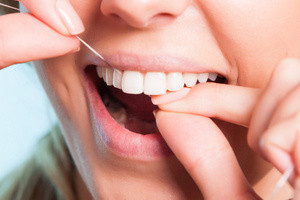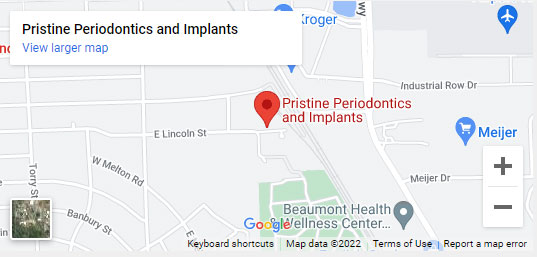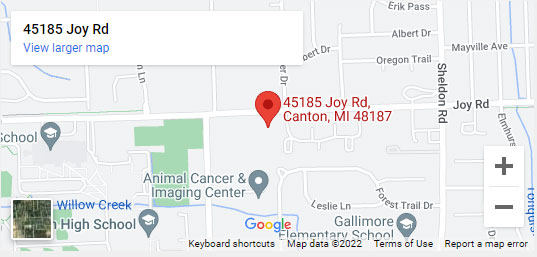
According to a study by NPR, only 4 out of 10 Americans floss daily, and 27% of Americans lie to their dentist about how often they floss.
A lot of people hate flossing. Unlike brushing, there’s no instant gratification that comes with it.
Your teeth don’t seem more sparkly, and your mouth doesn’t feel noticeably fresher. You might feel some gratification from flossing after eating BBQ ribs, but for the most part, you don’t feel that different after flossing.
Flossing has seen some controversy in the media lately. The Associated Press released a statement claiming that there isn’t enough evidence flossing makes a difference in your gum health. However, a lot of professionals still advocate flossing for healthy gums. Today, we’re going to get to the bottom of flossing, so you can rest assured you’re doing everything you can to have better dental hygiene.
The Debate On Flossing for Dental Hygiene
In 1979, the federal government first recommended flossing in a surgeon general report. Five years afterward, the Dietary Guidelines for Americans also claimed flossing was an important way to take care of your teeth and gums.
Then in 2015, the Associated Press tried to get evidence from the Department of Health and Human Services, following up with a request from the Freedom of Information Act. Next thing we know, the federal government releases a dietary guideline (this year) but flossing is removed from the guideline. The government followed up with a statement, claiming that flossing hasn’t been researched effectively.
In the release, the AP looked at research from 25 studies comparing brushing to flossing. They found there was little evidence that floss actually improves oral health. However, a study in 2011 did show that floss reduces gum inflammation. The gums get inflamed and tender after prolonged exposure to gum disease. However, ultimately the conclusion was that flossing isn’t effective at removing plaque.
The Problem with the Associated Press’s Research on Flossing for Oral Health
Most studies against flossing are unsubstantial, because they don’t include enough participants or take data for a significant period of time. Some of these studies lasted as little as 2 weeks, which is too soon to tell if flossing is effective at keeping cavities and dental disease at bay.
One of the studies only tested 25 patients after only flossing once. To make them even more inconclusive, most of the research only focused on warning signs of gum disease, like bleeding and inflammation, instead of actually looking at the condition of the gums and cavities on a microscopic level.
Should You Still Floss for Healthy Gums?
Not flossing your teeth after brushing is like not cleaning the baseboard in your house. You could clean the entire house, but it’s still going to look dirty if the baseboards are dusty.
Even if flossing isn’t proven to prevent gum disease and tooth decay, it still removes plaque and it certainly removes debris between your teeth. Beyond flossing, you should make sure that you’re flossing correctly. Plus, the ADA still recommends that you clean in between your teeth at least once a day, whether that be with floss, toothpicks, brushes, or water flossers.
Not to mention, there isn’t a study or dentist that claims that flossing is bad for your dental health. There are few studies showing that someone’s health is suffering, because they floss. So, while some studies say flossing is good, and others say it has no effect, there aren’t any studies saying flossing is bad. You might as well keep at it, especially since proper flossing technique removes plaque, and plaque is directly correlated to gum disease and cavities.
The trick to seeing results with flossing is by doing it correctly. One study looked at the correlation between flossing and tooth decay in children. They split the kids into groups of children who flossed at home, and children who got professionally flossed.
The participants with professional flossings experienced a 40% decrease in cavities. The other participants didn’t see any significant decrease in cavities. They came to the conclusion that flossing doesn’t prevent cavities, but flossing properly can help improve your oral health.
The Key to Healthy Gums by Flossing Properly
To floss correctly, you need to start with about 18 inches of floss around both of your middle or index fingers. You should have about an inch or two of floss leftover to remove plaque and debris.
Hold the floss stiff between your thumb and index finger, then gently wedge it up-and-down between your teeth, following the base of each teeth. A lot of the time, people don’t floss under their gumline. You should make sure you’re going below the gum line without snapping or forcing the floss. You don’t want to cut or bruise your gums. Make sure you’re only using clean sections of the floss as you move along your smiles to another tooth. You’ll also want to gently move the floss back and forth away from the teeth to remove it between tight spaces.
Depending on your bite, you can try different kinds of floss. There’s nylon floss that you can get waxed or unwaxed. These kinds of floss tend to shred easily, which isn’t great for people with little space between their teeth. If your teeth have tight contact points, you should try PTFE floss, which is essentially shred proof. If your gums are sensitive, you should try waxed floss. Waxed floss is much more gentle on the gum tissue.
Ask Us How to Floss for Gum Health
Next time you’re in our office for your annual checkup, simply ask us if you’re flossing technique is correct. Flossing properly is more important than the act of absent mindedly wedging string between your teeth. We might suggest a different regimen or tool for cleaning between your gums. Remember that a smile isn’t healthy unless your gums are healthy too. Schedule an appointment with Pristine Periodontics and Implants today at 248-838-1143.


